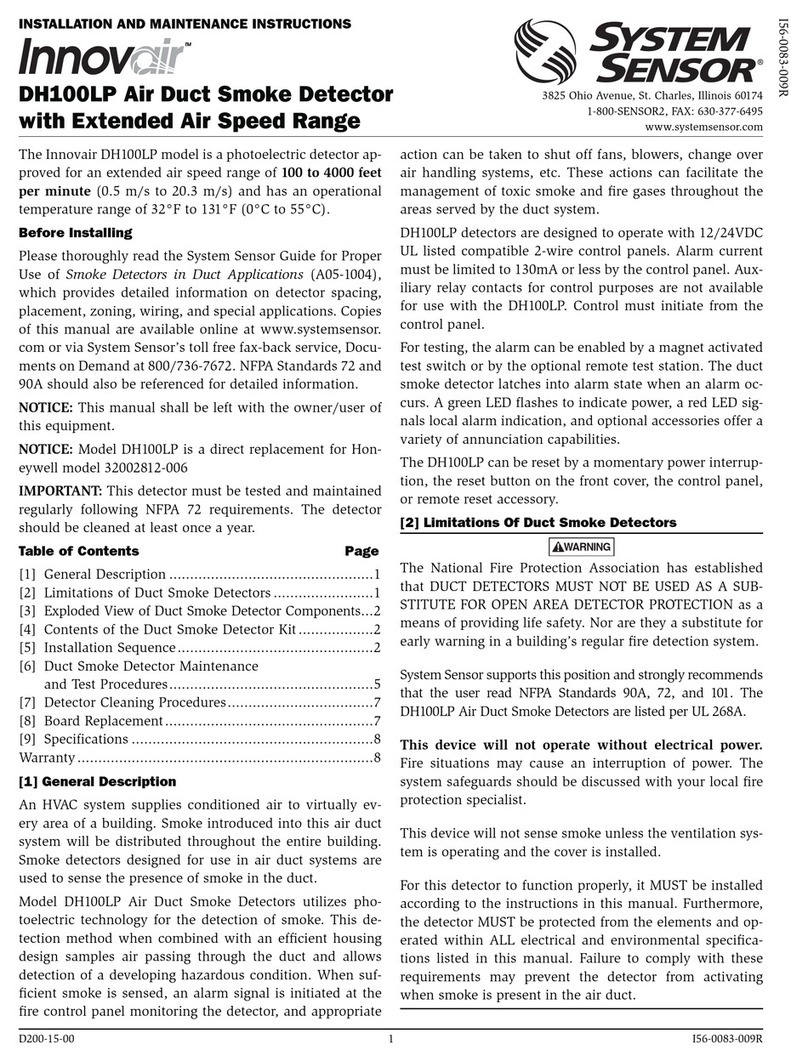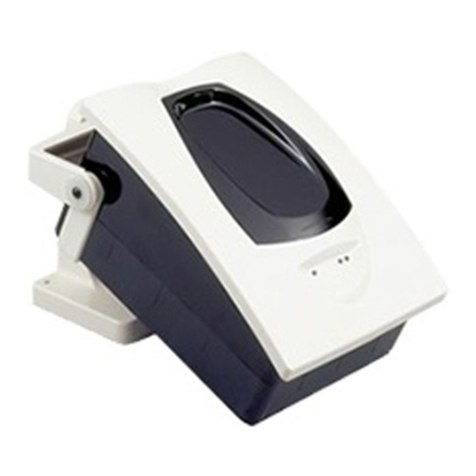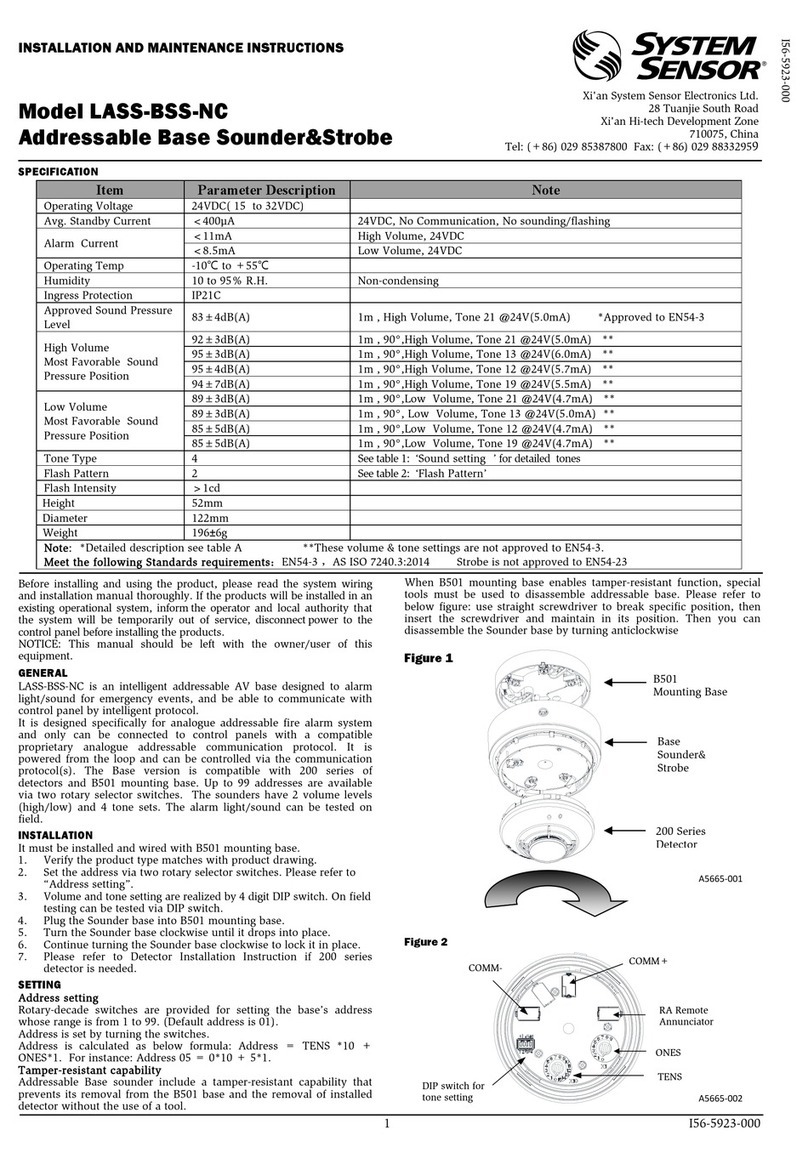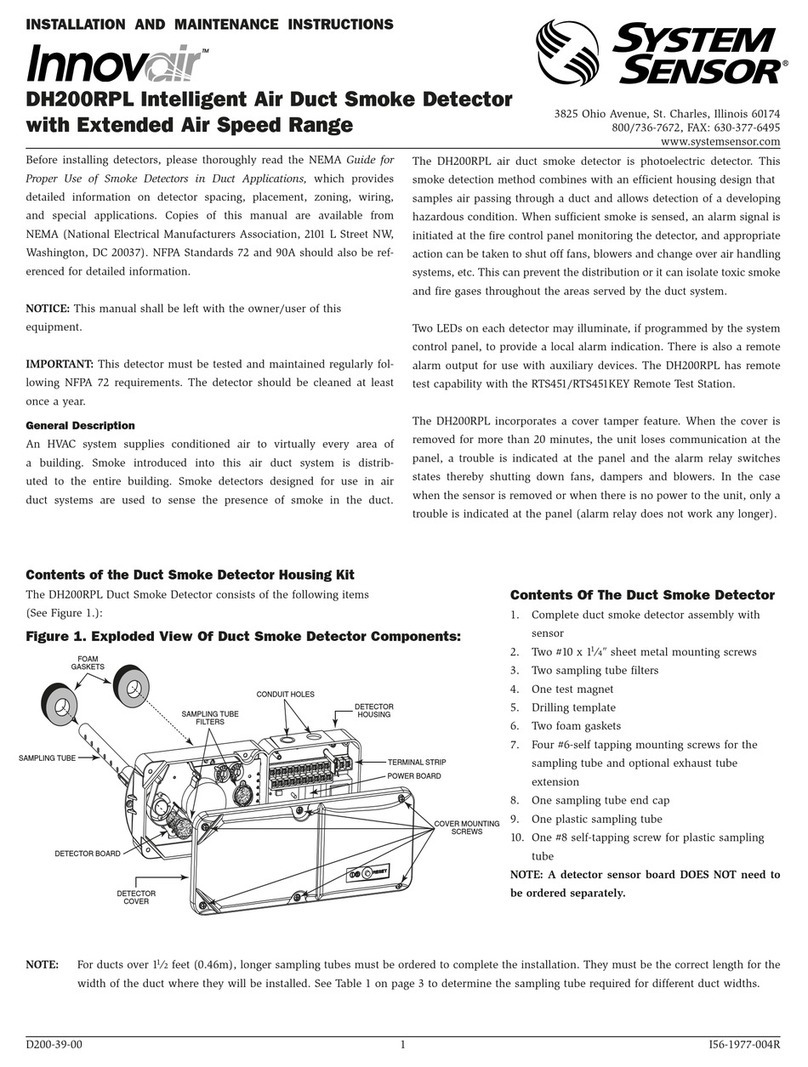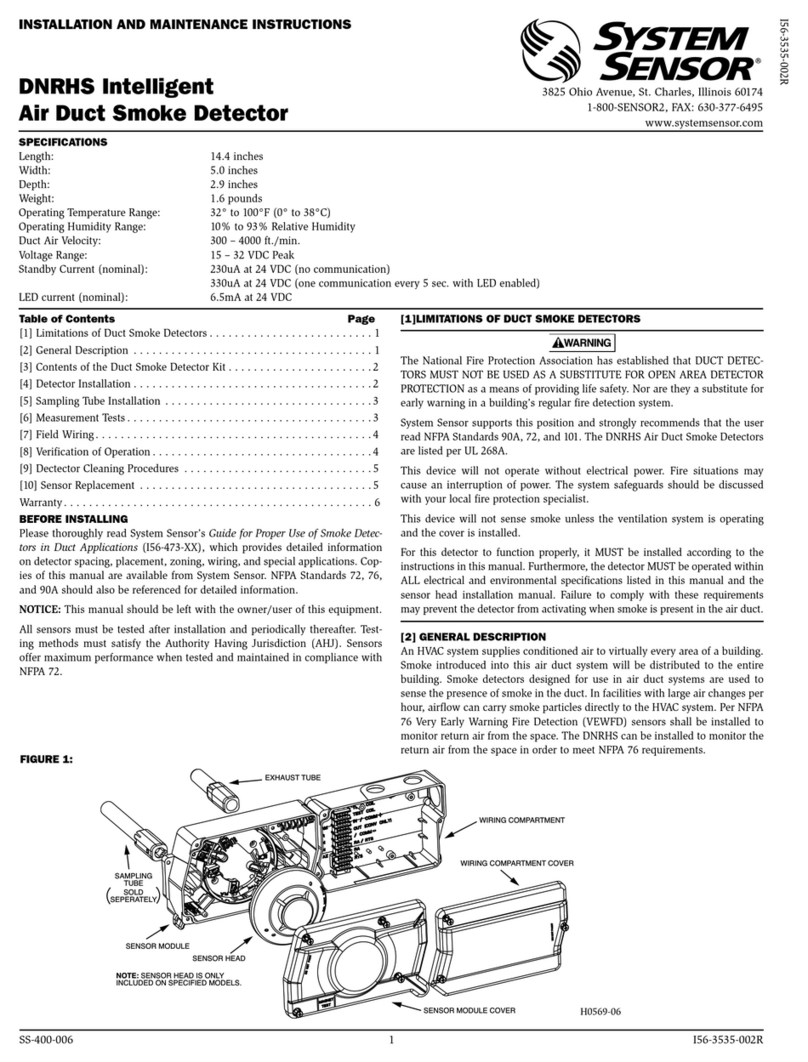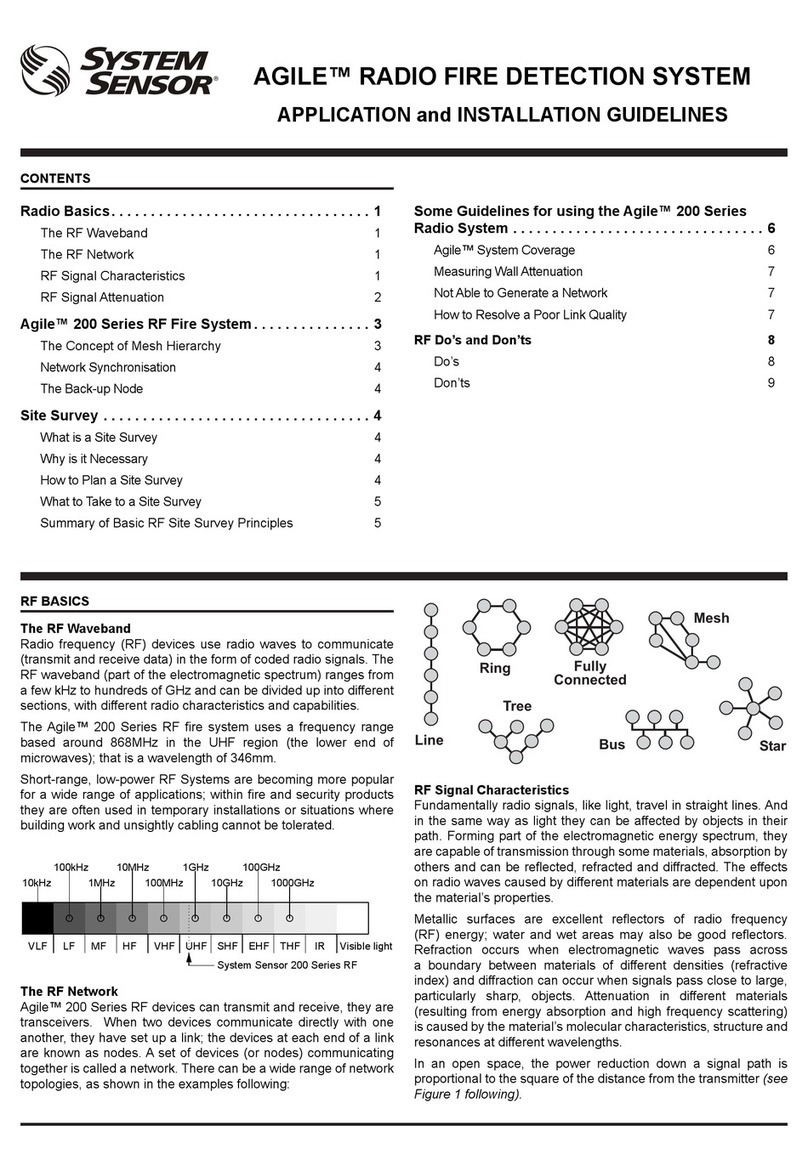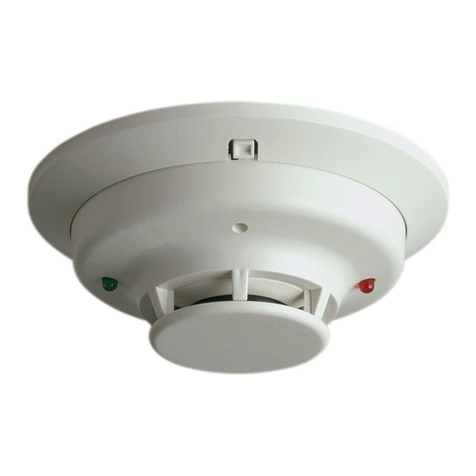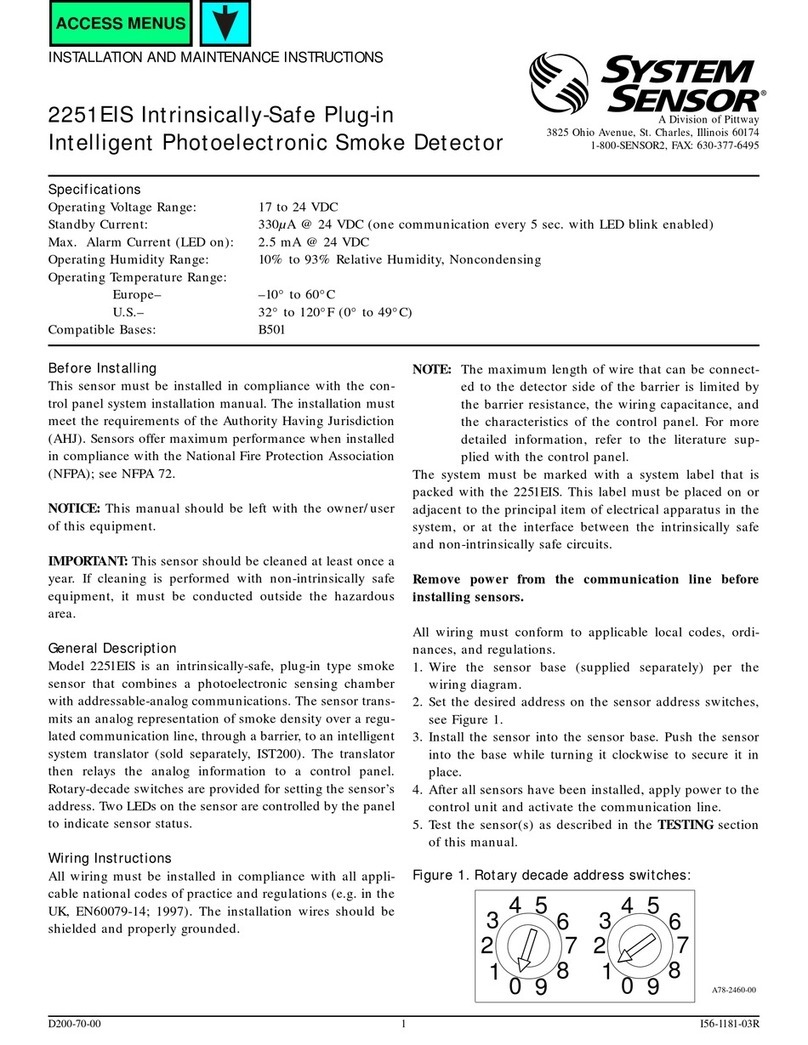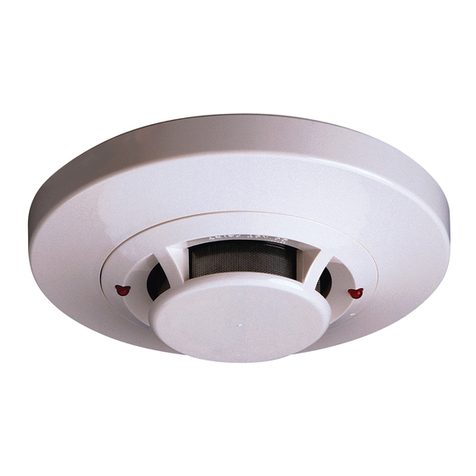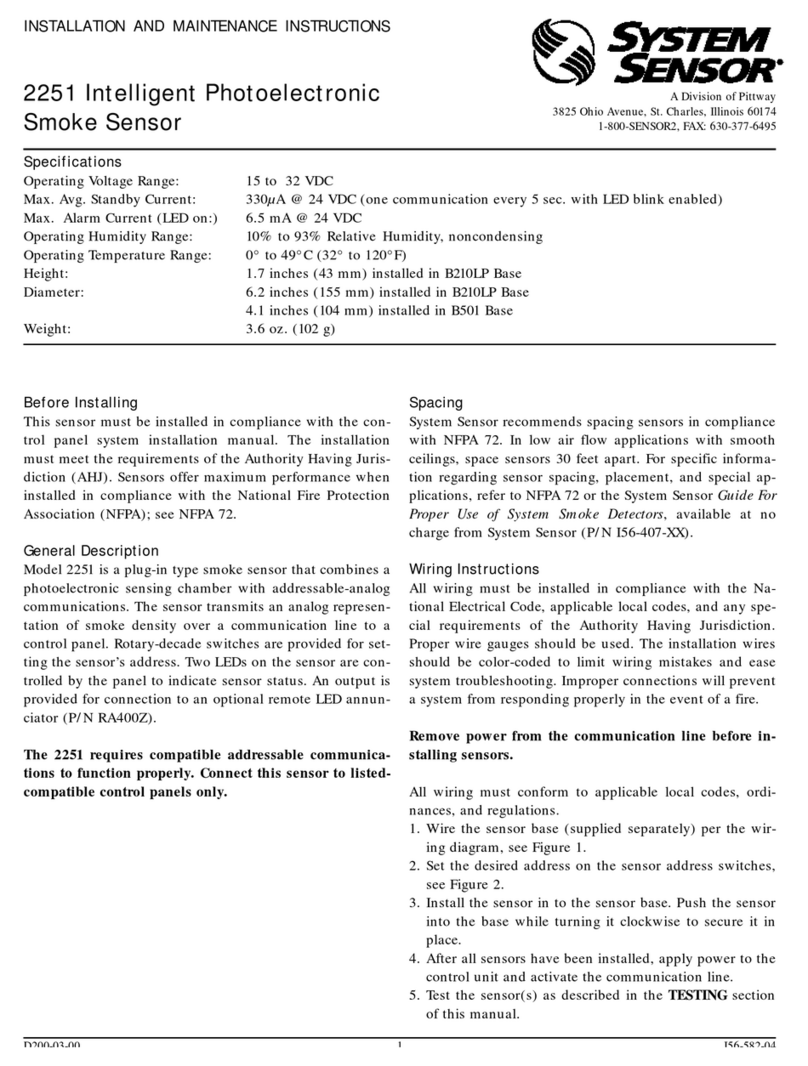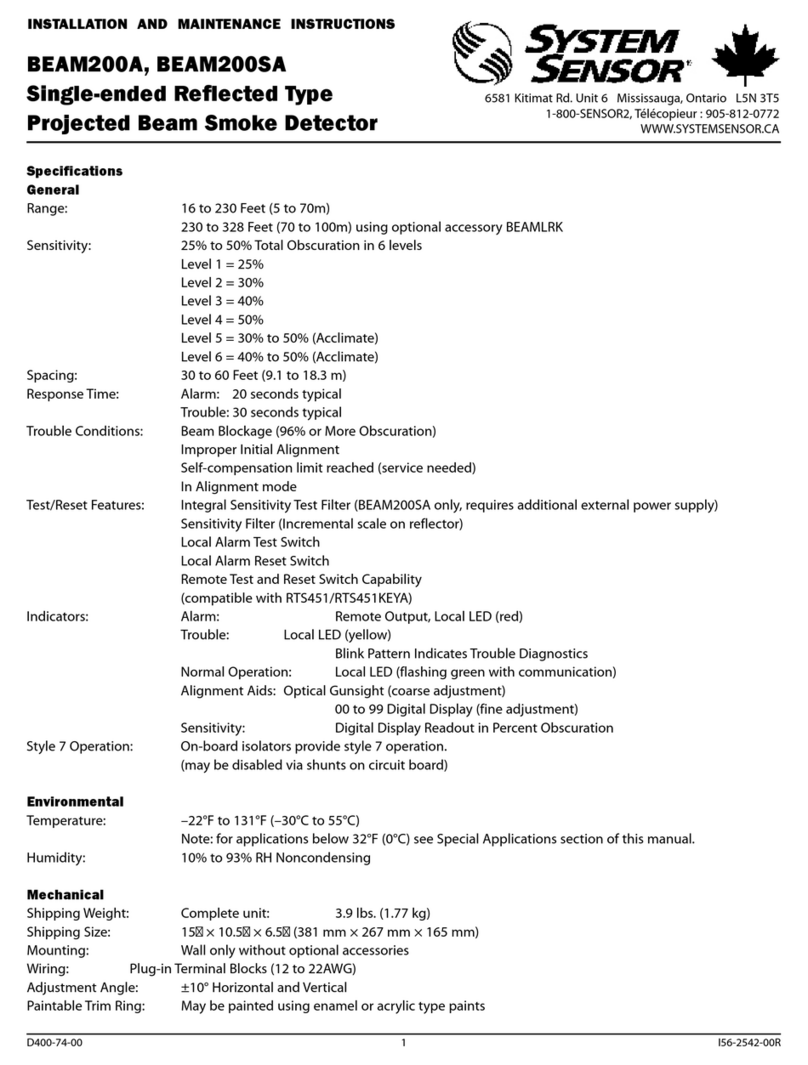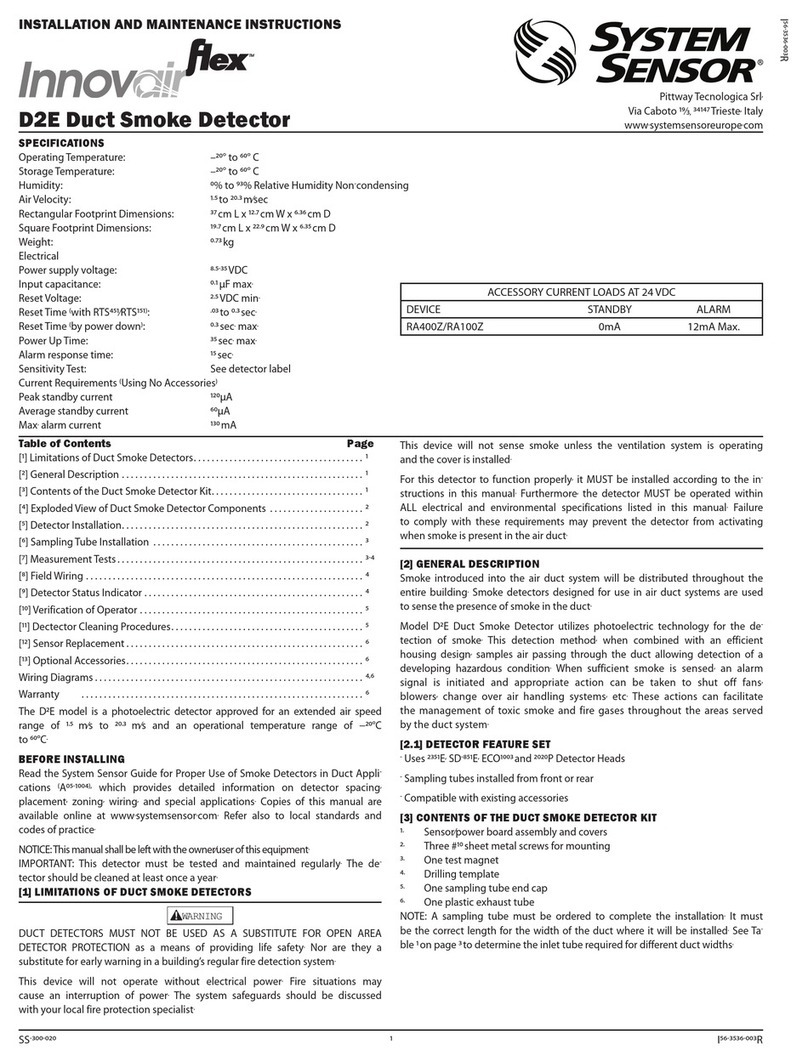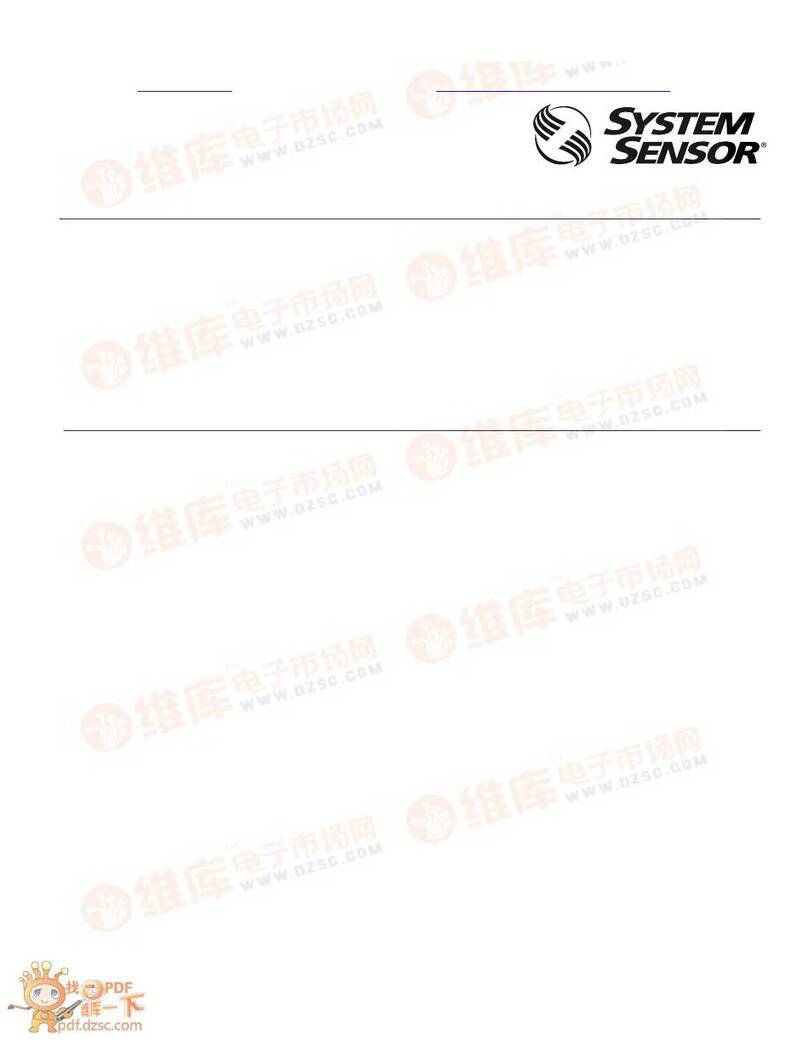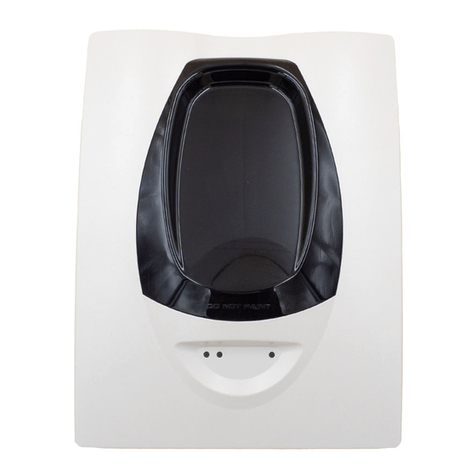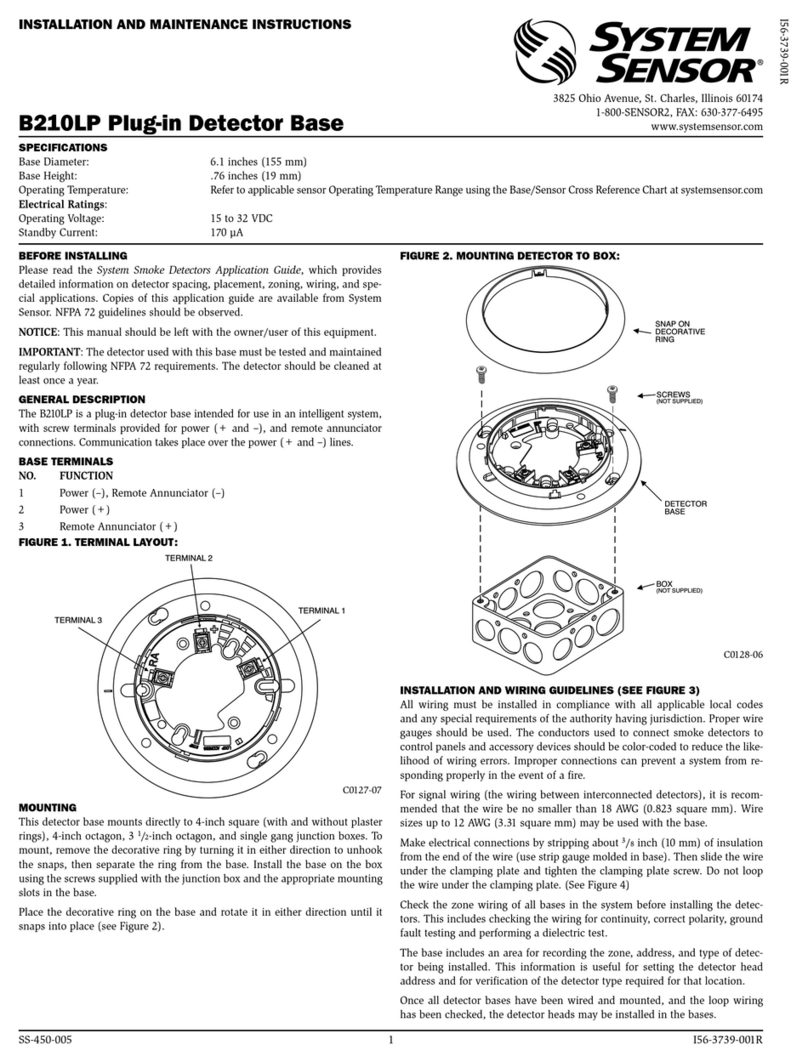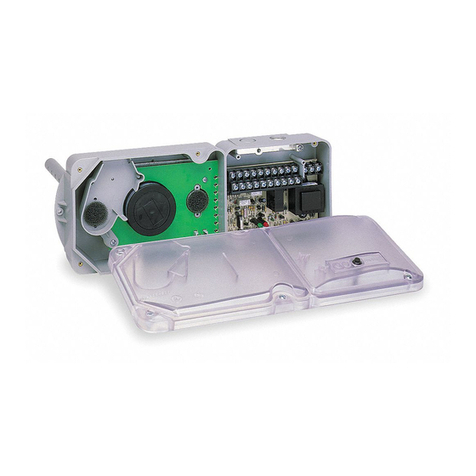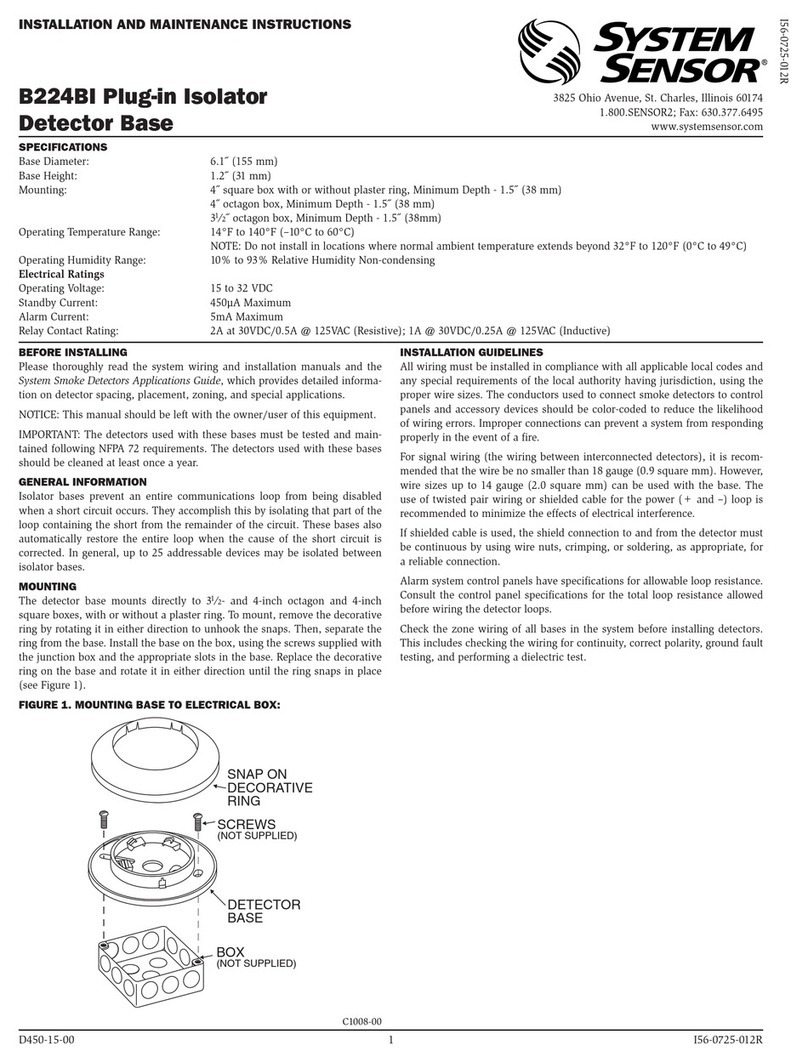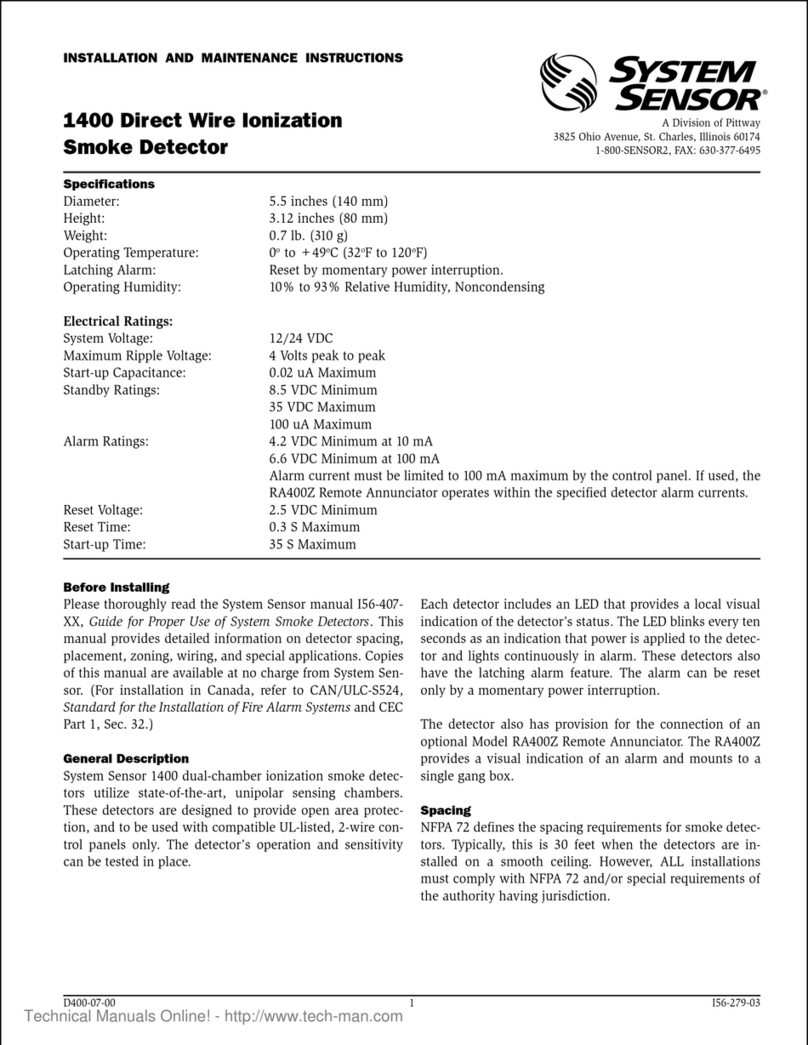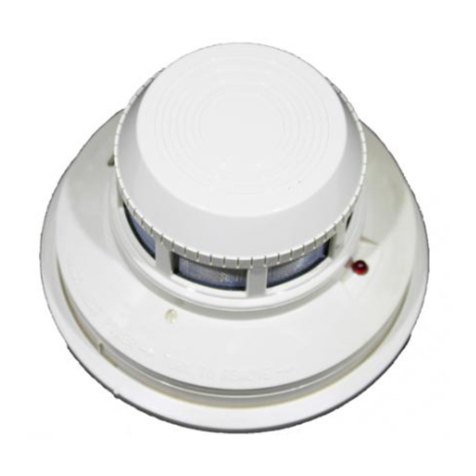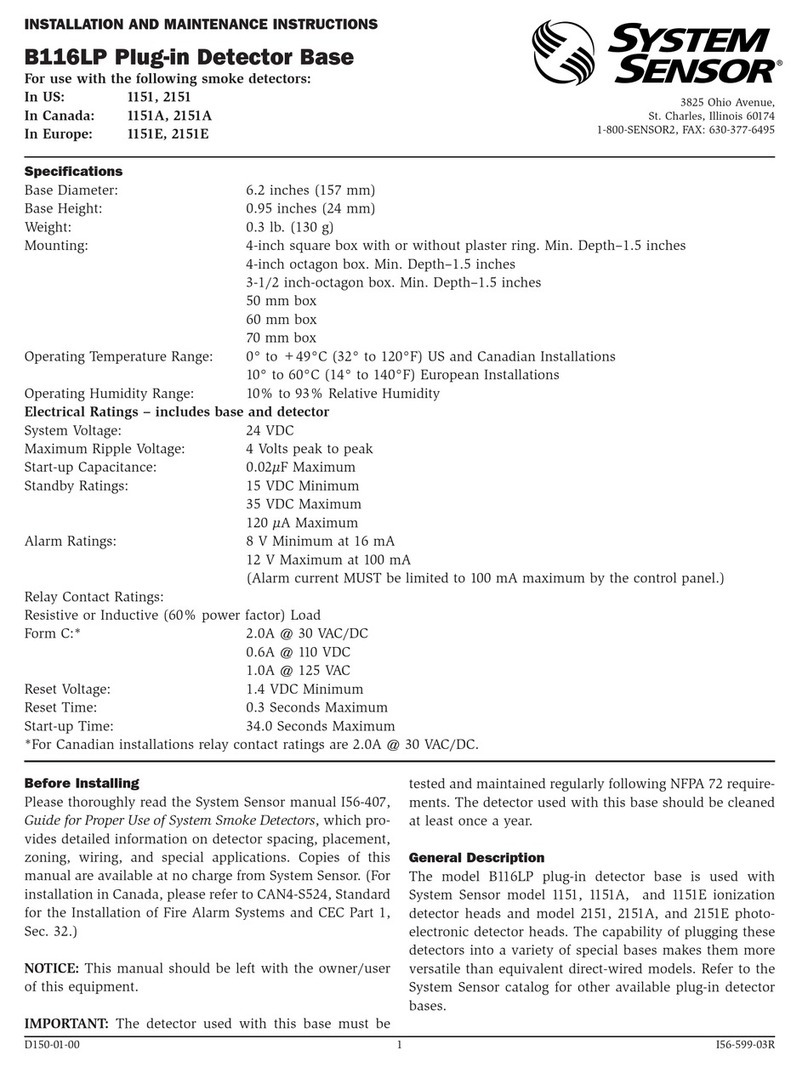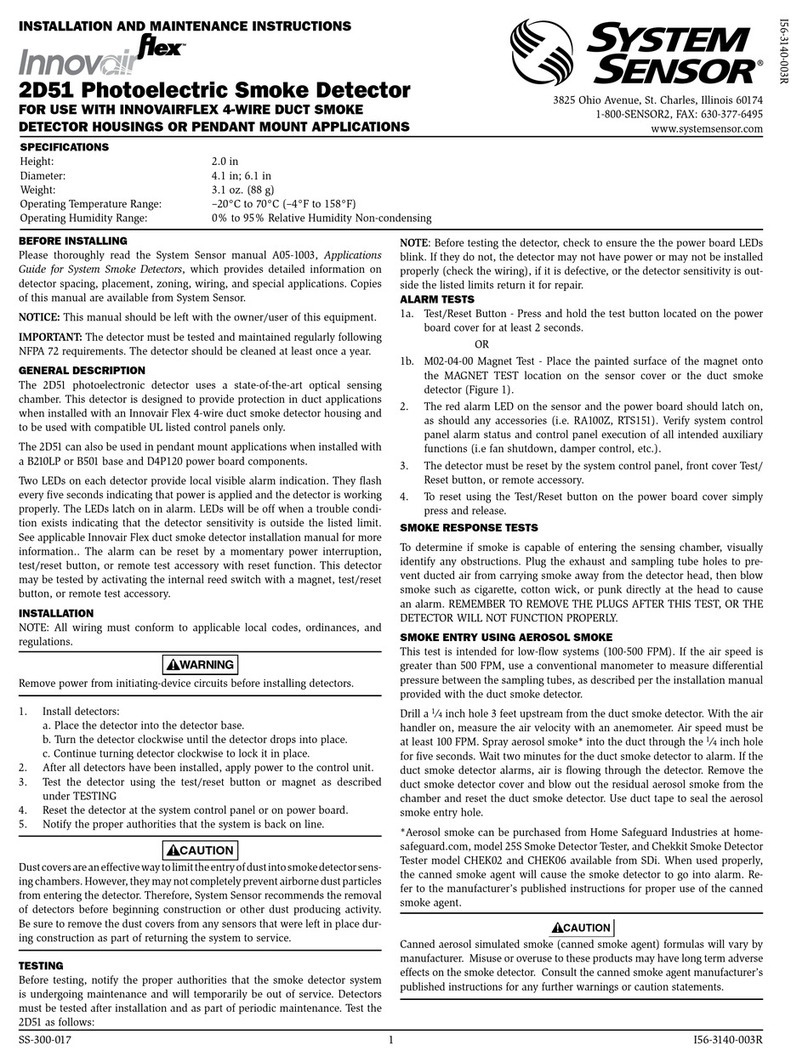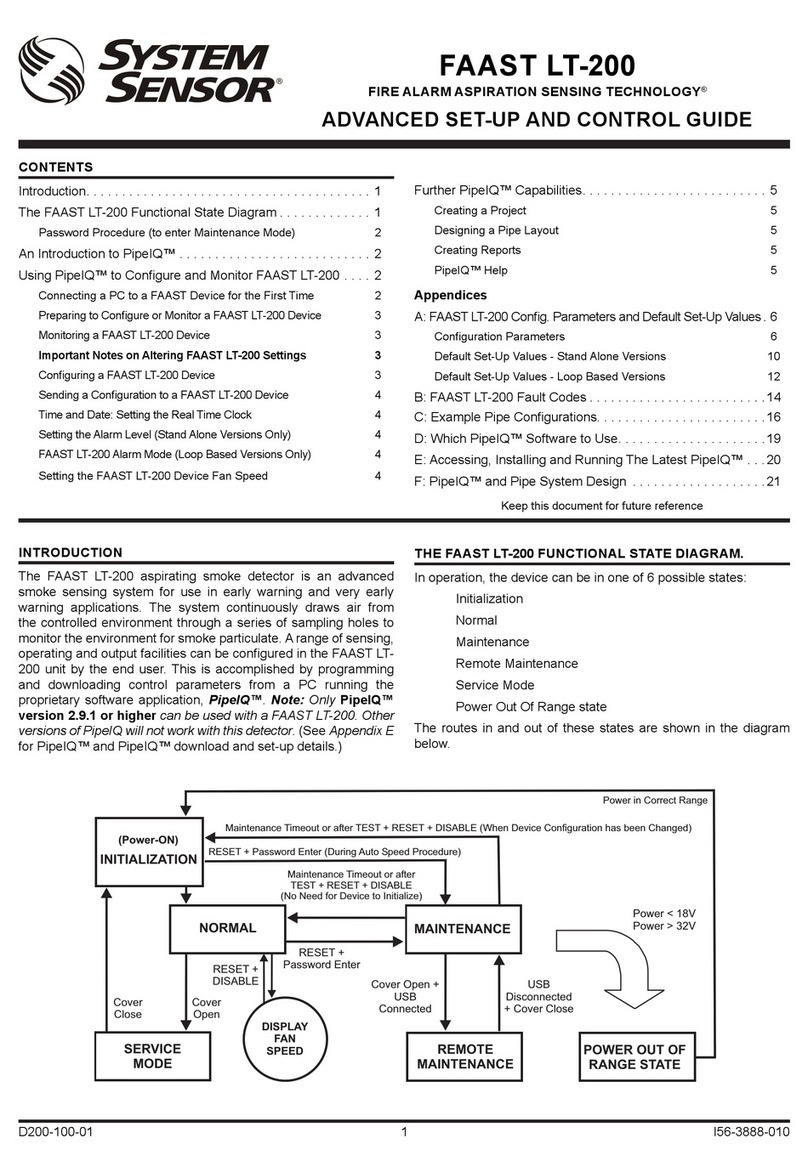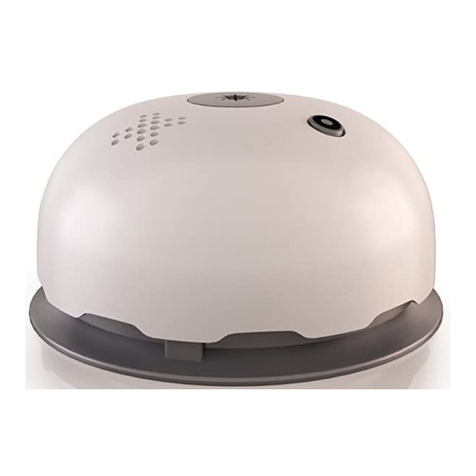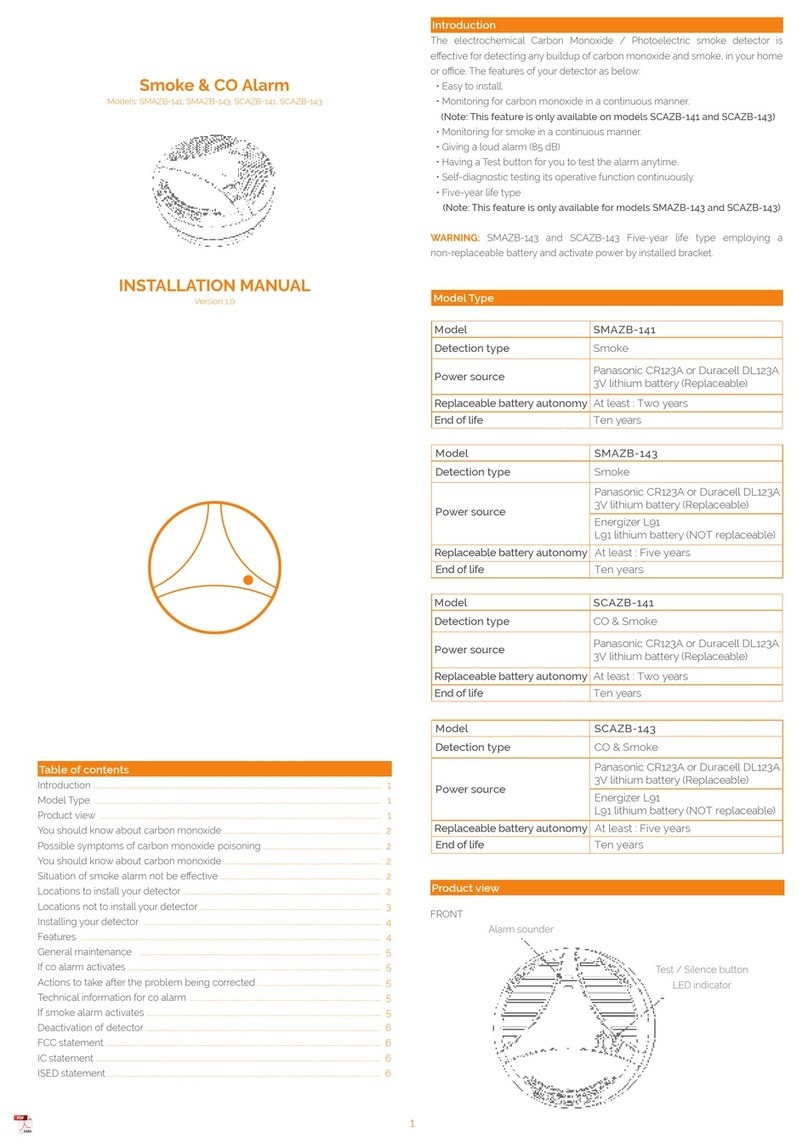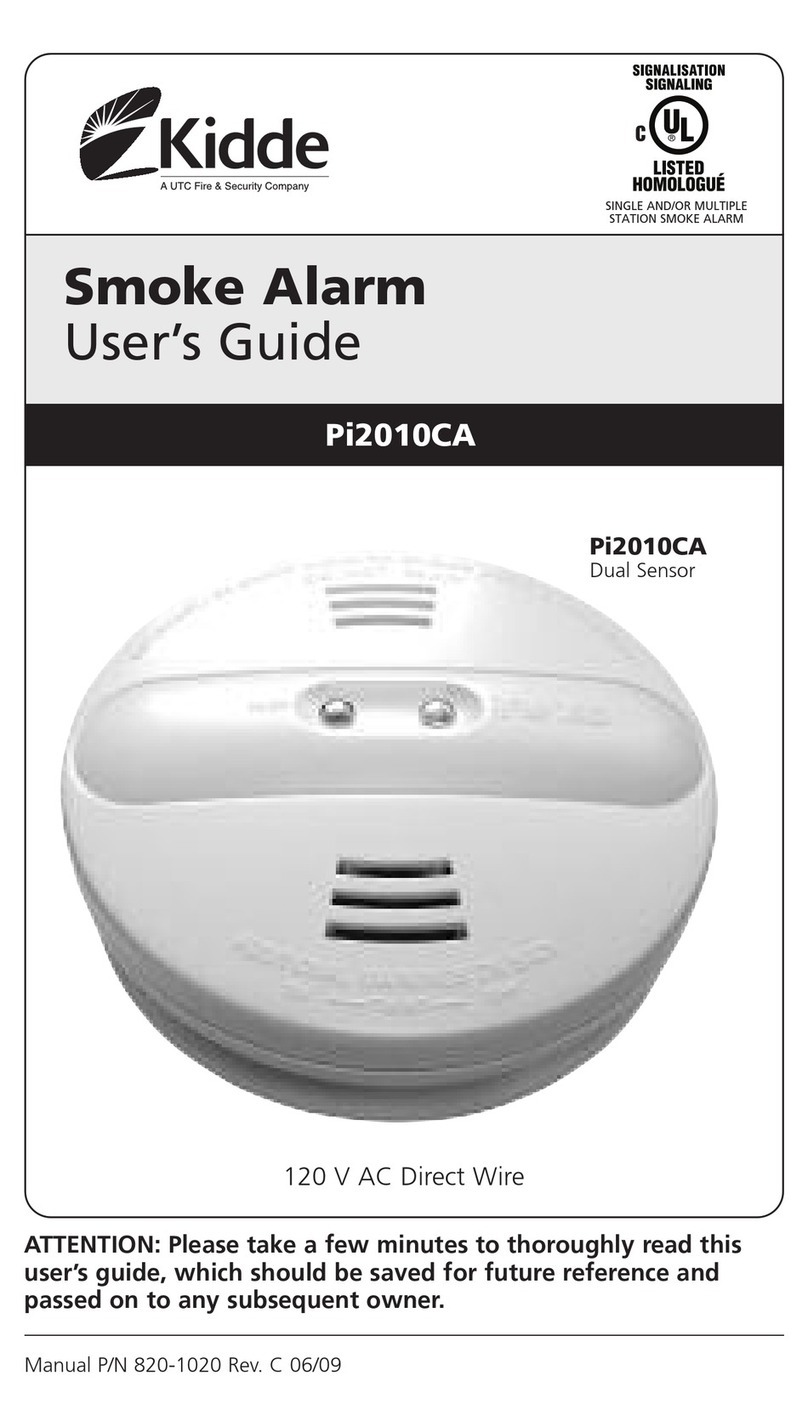
D400-85-00 2 I56-2541-005R
Three LEDs on the detector indicate the current status: a red LED for alarm, a
yellow LED for trouble, and a blinking green LED for standby operation. The
alarm signal latches and can be reset by a momentary power interruption, by
using the remote reset input to the detector if using the remote test/reset sta-
tion, or with the local reset button located on the detector. The local reset but-
ton is accessible by removing the outer paintable trim ring. The yellow LED
will blink in specific patterns to provide a diagnostic aid when diagnosing the
cause of a trouble signal. It will also blink the amount of drift compensation
that has been used at the conclusion of the test. Trouble signals automati-
cally reset upon removing the cause of trouble. Red and yellow LEDs can be
remotely connected to the remote Alarm and Trouble outputs. These outputs
mimic the functions of the detector’s red and yellow LEDs. In addition to these
indicators, there is a dual digital display that reads 00 to 99. This display is
used to indicate the signal strength of the beam in alignment mode and to
indicate the sensitivity setting of the detector in percent obscuration when
setting the sensitivity of the detector. No additional equipment is needed for
alignment of the beam.
Each detector contains one Form A (normally open) contact for alarm signals
and one Form B (normally closed) contact for trouble signals. The trouble
contact will open if power is removed from the detector. Thus, an additional
EOL power supervision relay is not necessary. The trouble contacts from all
the beam detectors on one initiating circuit must be connected after the last
indicating device on the loop. This prevents a single beam detector in trouble
from disabling other initiating devices on the same loop.
SpECIAL AppLICATIONS
Due to the inherent capabilities of projected type beam detectors they are often
installed in locations where spot-type detection is impractical. Projected type
beam smoke detectors are ideally suited for environmental conditions that
might include high ceilings, dusty and dirty environments, or environments
that experience temperature extremes. Often these conditions present special
problems for the installation of spot-type detectors and even greater problems
for their proper maintenance. Due to the inherent flexibility of mounting loca-
tions and large coverage area of projected type beam detectors often the condi-
tions above can be addressed or minimized.
Some examples of applications for beam detectors might include freezers, air-
craft hangars, cold storage warehouses, shipping warehouses, enclosed park-
ing facilities, sporting arenas and stadiums, concert halls, barns, or stables.
Some of these environments might be considered to hostile for spot-type
smoke detectors. If the environment is considered to be hostile then the colder
alarm threshold settings should be used.
Before installing the transmitter/receiver unit or reflector in these types of
applications special consideration should be given to ensure proper operation
of the beam detector. The beam detector should not be installed in environ-
ments where there is no temperature control and condensation or icing is
likely. Condensation or icing of the reflector surface or the outer surface of
the transmitter/receiver unit will obscure the light beam resulting in a false
alarm. If elevated humidity levels and rapidly changing temperatures can be
expected then condensation will likely form and the application should not be
considered acceptable for the beam detector. The beam detector should not be
installed in locations where the transmitter/receiver unit, the reflector, or the
optical pathway between them may be exposed to outdoor conditions such as
rain, snow, sleet, or fog. These conditions will impair the proper operation of
the detector and must be avoided.
AppROvED ACCESSORIES
The following accessories can be purchased separately for use with this beam
detector.
BEAMLRK
The BEAMLRK allows System Sensor reflected beam detectors to be installed
at separations between 230 and 328 feet (70 to 100 meters). At these distances,
four 8inch×8inch reflectors must be used to provide enough reflected infrared
light. This kit includes 3 additional reflectors with new test scale legends. The
reflector included with the transmitter/receiver unit is the fourth reflector to
be used. This kit is not compatible with the multi-mount kit (BEAMMMK).
BEAMMMK
The BEAMMMK allows System Sensor reflected beam detectors and reflec-
tors to be mounted to either a vertical wall or the ceiling. The kit allows for
additional alignment range in cases where the detector and reflector cannot
be mounted within 10° of each other. The kit includes the hardware neces-
sary to mount either a single transmitter/receiver unit or a single reflector.
(To mount the transmitter/receiver the surface mount kit, BEAMSMK, must
also be used). If the transmitter/receiver and the reflector require additional
alignment range two kits are required. The kit is not compatible with the long-
range reflector kit (BEAMLRK).
BEAMSMK
The BEAMSMK allows System Sensor reflected beam detectors to be mounted
when surface wiring is used. This kit must be used when mounting the trans-
mitter/receiver unit with the multi-mount kit (BEAMMMK).
BEAMHK
The BEAMHK allows the transmitter/receiver unit to operate in environments
prone to the formation of condensation. Condensation forming on the beam
detector unit may result in trouble or false alarm conditions. BEAMHK will
lessen the likelihood of condensation by maintaining the unit at a temperature
that is slightly higher than the surrounding air. Please refer to the BEAMHK
installation manual for operation instructions.
BEAMHKR
The BEAMHKR allows the reflector to operate in environments prone to the
formation of condensation. Condensation forming on the reflector may result
in trouble or false alarm conditions. BEAMHKR will lessen the likelihood of
condensation by maintaining the reflector at a temperature that is slightly
higher than surrounding air. The kit requires a 24V power supply. When used
with the long-range reflector kit (BEAMLRK), it is necessary to purchase and
install four BEAMHKR kits. Please refer to the BEAMHKR installation manual
for operation instructions.
RTS451A/KEYA
The remote test accessory allows for the beam detector to be tested remotely.
The test accessory provides test and reset functions and green and red LED’s
that mimic the LED’s on the detector.
pARTS LIST
Description Quantity
Transmitter/Receiver Unit.....................................1
Paintable Trim Ring .........................................1
Reflector ..............................................1
Plug-in Terminal Blocks ......................................4
Instruction Manual .........................................1
Orange Sticky Paper .........................................1
pARTS DIAGRAM (NOT TO SCALE)
C0306-00
DETECTOR pLACEMENT
This section of the manual discusses the placement of projected beam detec-
tors. Though this information is based upon industry expertise, it is intended
to be used only as a technical guide. Always comply with the requirements
signal. When the obscuration reaches alarm thresholds (chosen at the trans-
mitter/receiver unit), the detector generates an alarm signal. Complete block-
age of the beam causes a trouble signal. Slow changes in obscuration due to
a build up of dirt or dust on the lens of the detector are compensated for by
a microcontroller that continuously monitors the signal strength and periodi-
cally updates the alarm and trouble thresholds. When the self-compensation
circuit reaches its limit, the detector generates a trouble signal, indicating the
need for service.
